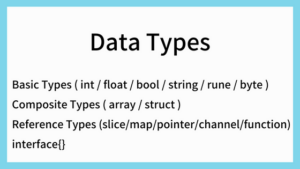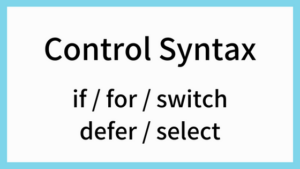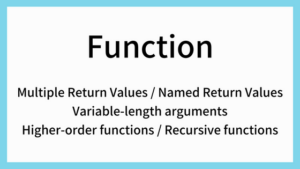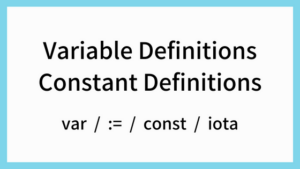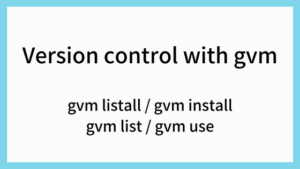Install go on my Mac and check for simple operation. We will review the role of GOROOT and GOPATH, go commands (env, get, build, run, mod), and how to use GoLand.
Install
Go binaries can be downloaded from the following page. Downloads – The Go Programming Language
Here, we will use Homebrew to install go on a Mac.
brew install goAfter installation, verify that the go command can be executed.
$ go
Go is a tool for managing Go source code.
Usage:
go <command> [arguments]
The commands are:
bug start a bug report
build compile packages and dependencies
clean remove object files and cached files
doc show documentation for package or symbol
env print Go environment information
fix update packages to use new APIs
fmt gofmt (reformat) package sources
generate generate Go files by processing source
get add dependencies to current module and install them
install compile and install packages and dependencies
list list packages or modules
mod module maintenance
run compile and run Go program
test test packages
tool run specified go tool
version print Go version
vet report likely mistakes in packages
Use "go help <command>" for more information about a command.
Additional help topics:
buildconstraint build constraints
buildmode build modes
c calling between Go and C
cache build and test caching
environment environment variables
filetype file types
go.mod the go.mod file
gopath GOPATH environment variable
gopath-get legacy GOPATH go get
goproxy module proxy protocol
importpath import path syntax
modules modules, module versions, and more
module-get module-aware go get
module-auth module authentication using go.sum
module-private module configuration for non-public modules
packages package lists and patterns
testflag testing flags
testfunc testing functions
Use "go help <topic>" for more information about that topic.Environment variable ( go env )
go env to check about go’s environment variables.
GOROOT
The location where Go was installed can be found at GOROOT.
$ go env | grep GOROOT
GOROOT="/usr/local/Cellar/go/1.15.6/libexec"$ ls -l /usr/local/Cellar/go/1.15.6/libexec
total 248
-rw-r--r-- 1 xxx staff 1339 Dec 4 02:32 CONTRIBUTING.md
-rw-r--r-- 1 xxx staff 95475 Dec 4 02:32 CONTRIBUTORS
-rw-r--r-- 1 xxx staff 1303 Dec 4 02:32 PATENTS
-rw-r--r-- 1 xxx staff 397 Dec 4 02:32 SECURITY.md
-rw-r--r-- 1 xxx staff 8 Dec 4 02:32 VERSION
drwxr-xr-x 21 xxx staff 672 Dec 4 02:32 api
drwxr-xr-x 5 xxx staff 160 Dec 4 02:32 bin
drwxr-xr-x 45 xxx staff 1440 Dec 4 02:32 doc
-rw-r--r-- 1 xxx staff 5686 Dec 4 02:32 favicon.ico
drwxr-xr-x 3 xxx staff 96 Dec 4 02:32 lib
drwxr-xr-x 14 xxx staff 448 Dec 4 02:32 misc
drwxr-xr-x 6 xxx staff 192 Dec 4 02:32 pkg
-rw-r--r-- 1 xxx staff 26 Dec 4 02:32 robots.txt
drwxr-xr-x 69 xxx staff 2208 Dec 4 02:32 src
drwxr-xr-x 328 xxx staff 10496 Dec 4 02:32 testThe go command and other commands are stored under the bin folder.
$ ls -l /usr/local/Cellar/go/1.15.6/libexec/bin/
total 65864
-rwxr-xr-x 1 xxx staff 14125324 Dec 4 02:32 go
-rwxr-xr-x 1 xxx staff 16145836 Dec 4 02:32 godoc
-rwxr-xr-x 1 xxx staff 3447872 Dec 4 02:32 gofmtGOPATH
GOPATH is affected when deciding where to store packages obtained from outside.
$ go env | grep GOPATH
GOPATH="/Users/xxx/go"As an example, let’s download Echo.
$ go get github.com/labstack/echo/...$ tree -L 1 /Users/xxx/go
/Users/xxx/go
├── pkg
└── srcUnder src Package echo and Dependency Packages of echo are stored under the src directory.
$ tree -L 3 /Users/xxx/go/src
/Users/xxx/go/src
├── github.com
│ ├── dgrijalva
│ │ └── jwt-go
│ ├── labstack
│ │ ├── echo
│ │ └── gommon
│ ├── mattn
│ │ ├── go-colorable
│ │ └── go-isatty
│ └── valyala
│ └── fasttemplate
└── golang.org
└── x
├── crypto
├── net
├── sys
├── text
└── timeThe package object after the build is stored under pkg.
$ tree -L 4 /Users/xxx/go/pkg
/Users/xxx/go/pkg
└── darwin_amd64
└── github.com
└── labstack
├── echo
└── echo.aGoLand Settings
Open [GoLand] – [Preferences].
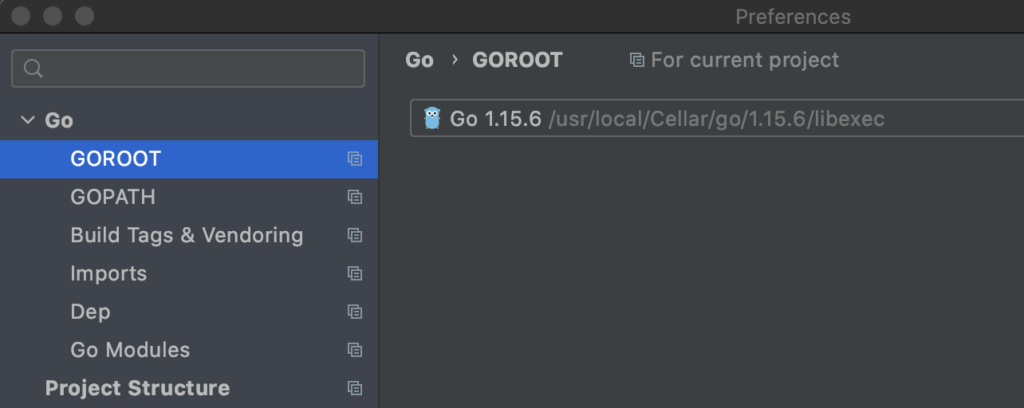
This is the GOROOT settings screen.
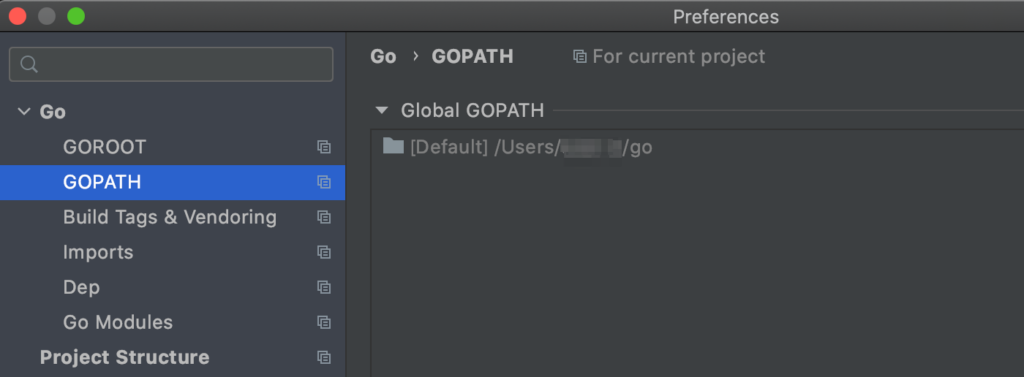
This is the GOPATH settings screen.
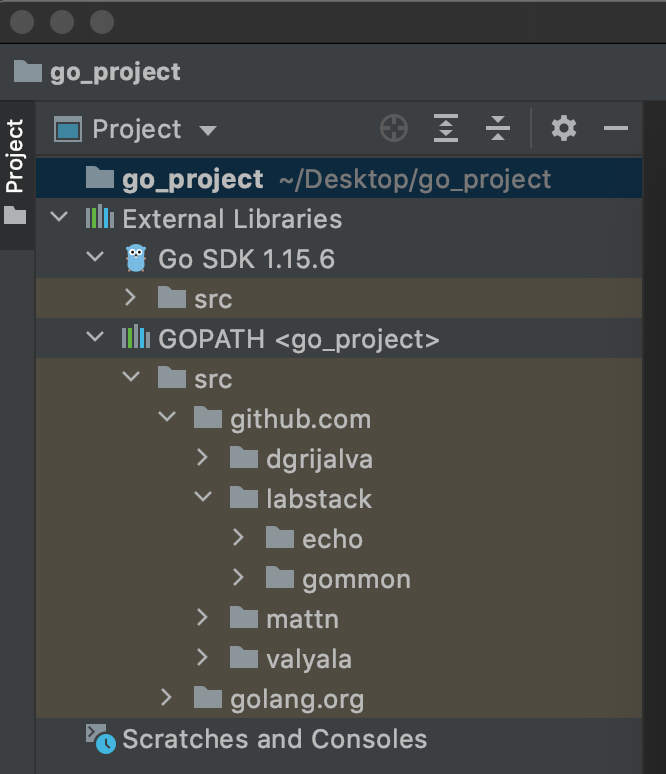
If configured correctly, the GO SDK and GOPATH if correctly configured.
Confirmation of Hello World
Create main.go file and describe the following process.
package main
import "fmt"
func main() {
fmt.Println("Hello world")
}go build
go build to generate an executable binary.
$ go build main.go
$ ls -l
total 4200
-rwxr-xr-x 1 xxx staff 2142872 Dec 4 02:32 main
-rw-r--r-- 1 xxx staff 73 Dec 4 02:32 main.goTry to run the generated executable binary.
$ ./main
Hello worldgo run
go run can be used to build and run at the same time.
$ go run main.go
Hello worldRun and debug in GoLand
First, check the normal execution.
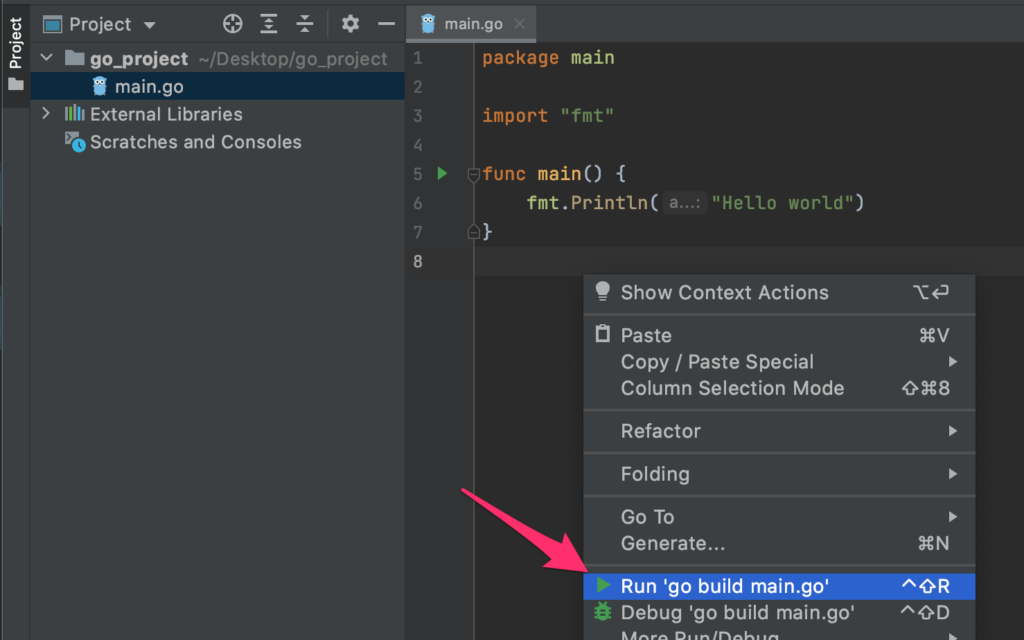
Click on the arrow to execute.
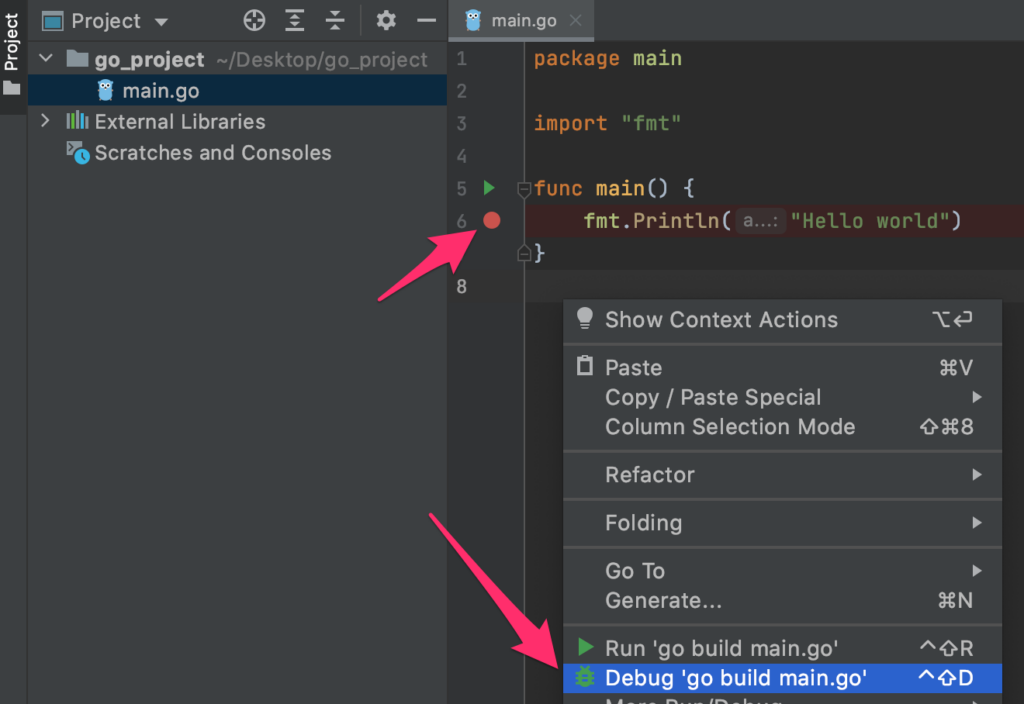
Run debugging with breakpoints in place.
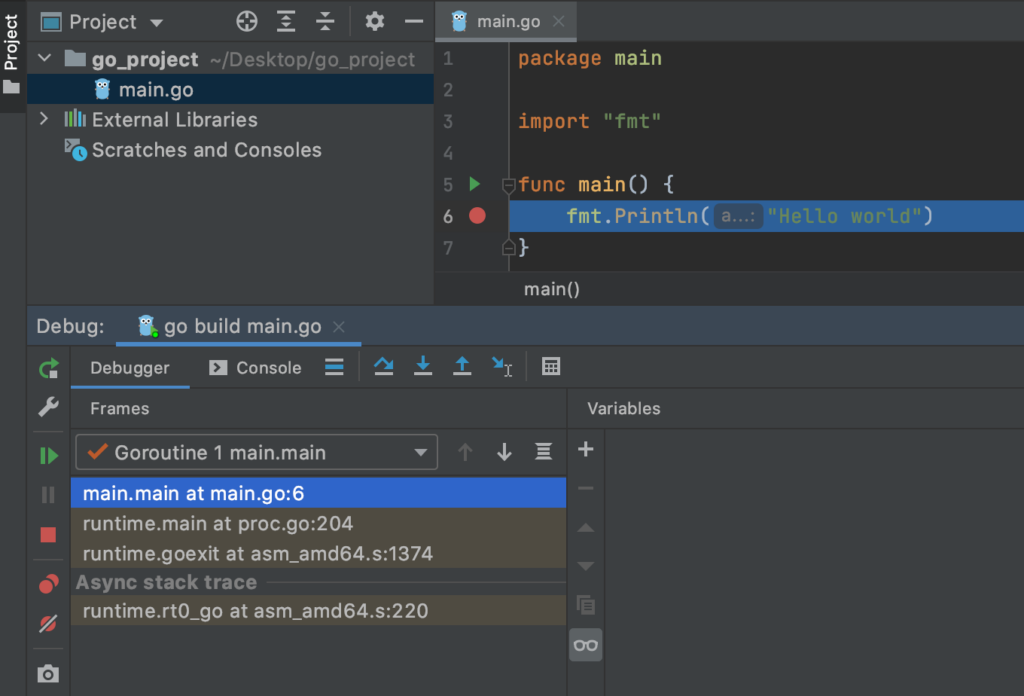
The process stopped at the breakpoint.
Module management by go mod
go mod is now available in Go 1.11 and above.
Dependent modules can be managed in go.mod and go.sum files.
The following subcommands are available in go mod.
$ go help mod
Go mod provides access to operations on modules.
Note that support for modules is built into all the go commands,
not just 'go mod'. For example, day-to-day adding, removing, upgrading,
and downgrading of dependencies should be done using 'go get'.
See 'go help modules' for an overview of module functionality.
Usage:
go mod <command> [arguments]
The commands are:
download download modules to local cache
edit edit go.mod from tools or scripts
graph print module requirement graph
init initialize new module in current directory
tidy add missing and remove unused modules
vendor make vendored copy of dependencies
verify verify dependencies have expected content
why explain why packages or modules are needed
Use "go help mod <command>" for more information about a command.go mod init
Initialize with go mod init.
$ go mod init example.com/xxxThe go.mod file has been created.
$ cat go.mod
module example.com/xxx
go 1.15go mod tidy
The following process is described in main.go.
package main
import (
"net/http"
"github.com/labstack/echo/v4"
)
func main() {
// Echo instance
e := echo.New()
// Routes
e.GET("/", hello)
// Start server
e.Logger.Fatal(e.Start(":1323"))
}
// Handler
func hello(c echo.Context) error {
return c.String(http.StatusOK, "Hello, World!")
}We use the Echo package.
go mod tidy to automatically install dependent modules and remove unused dependent modules.
$ go mod tidy
go: finding module for package github.com/labstack/echo/v4
go: downloading github.com/labstack/echo v1.4.4
go: downloading github.com/labstack/echo/v4 v4.1.17
go: downloading github.com/labstack/echo v3.3.10+incompatible
go: found github.com/labstack/echo/v4 in github.com/labstack/echo/v4 v4.1.17
go: downloading github.com/labstack/gommon v0.3.0
(省略) module example.com/xxx
go 1.15
+ require github.com/labstack/echo/v4 v4.1.17Enabling Modules in GoLand
Open [GoLand] – [Preferences].
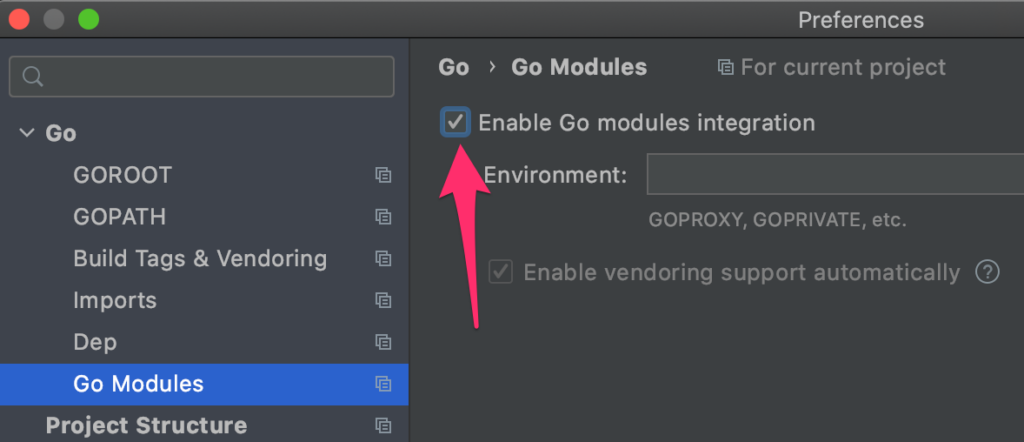
Check Enable Go modules integration.
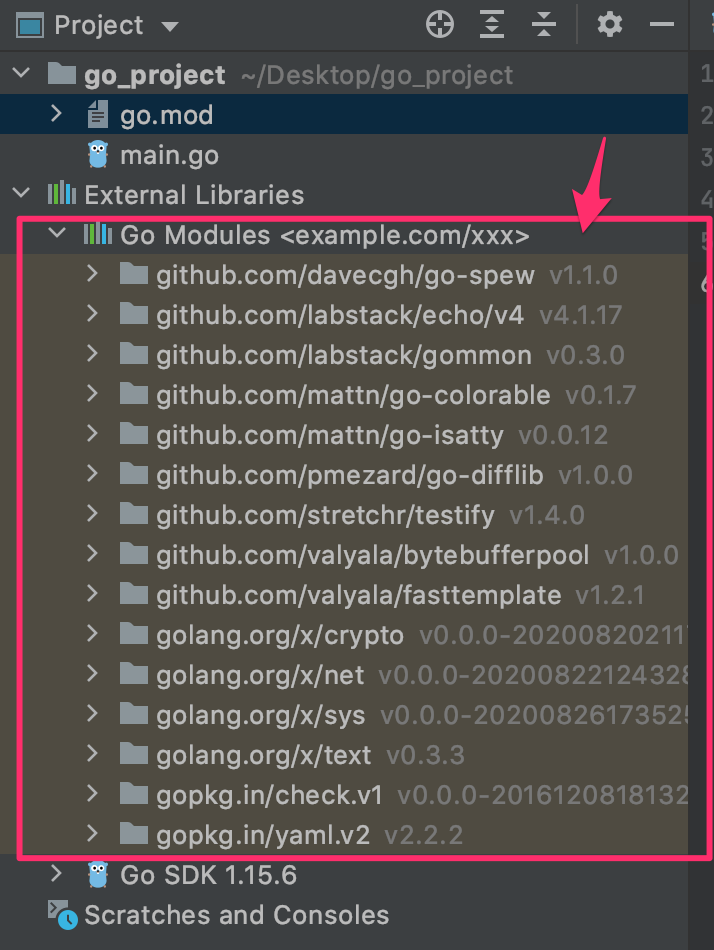
Go Modules has been recognized.
go get and go install
Starting with go’s 1.16, the use of go get and go install is easier to understand.
go get is used to edit go.mod.
go install is used for global installation of tools.
How to use go install
Available in the following formats
go install example.com/cmd@v1.0.0The version specification is required. To specify the latest version, add @latest.
GOPATH is set, the executable binary is installed under $GOPATH/bin.
$ go install github.com/tsenart/vegeta@latest
go: downloading github.com/tsenart/vegeta v1.2.0
(略)
$
$
$ ls $GOPATH/bin
vegeta